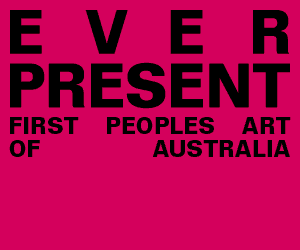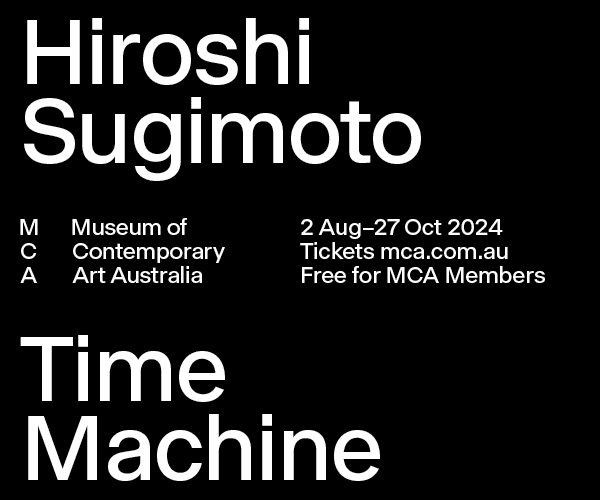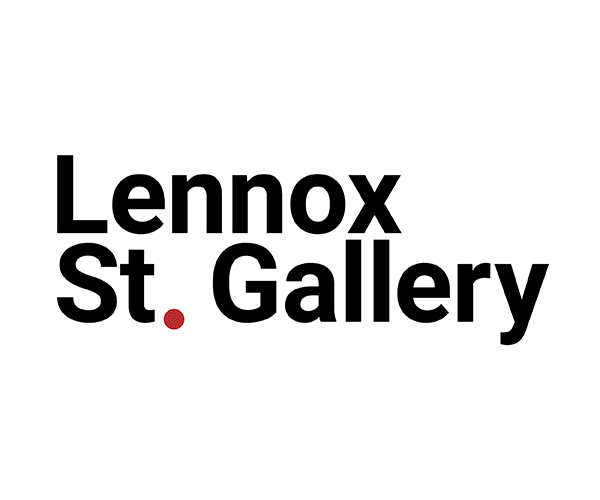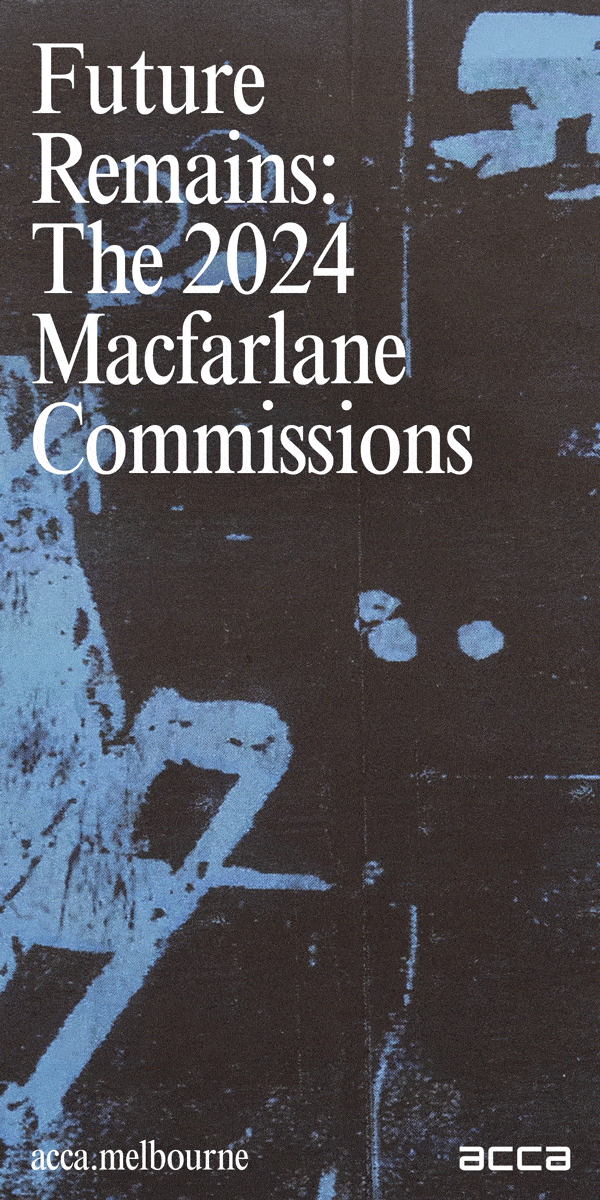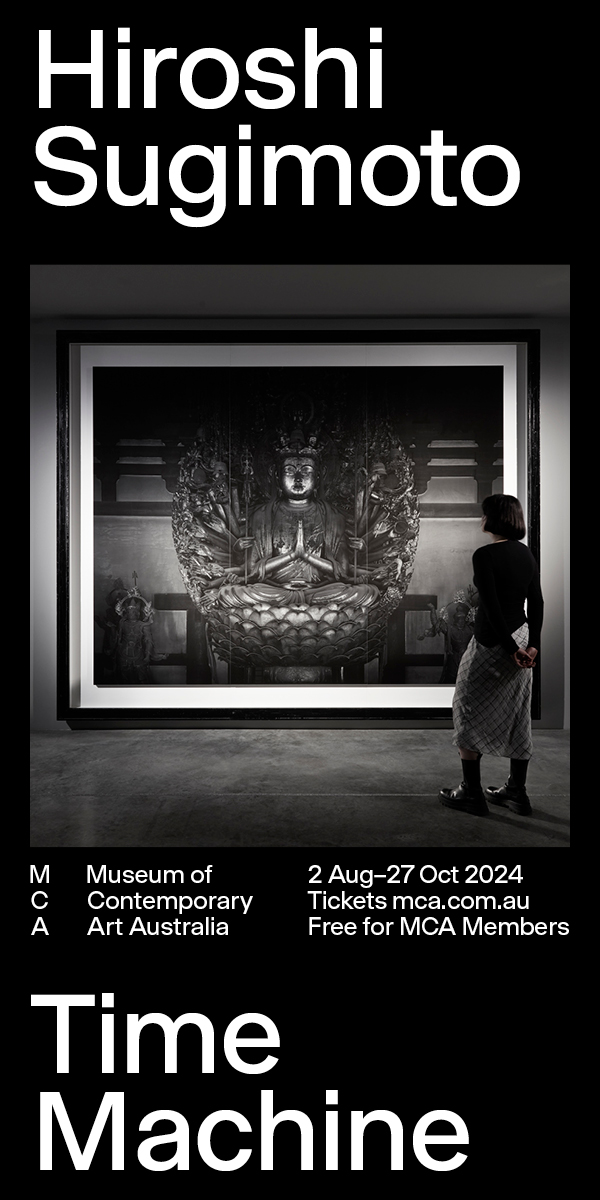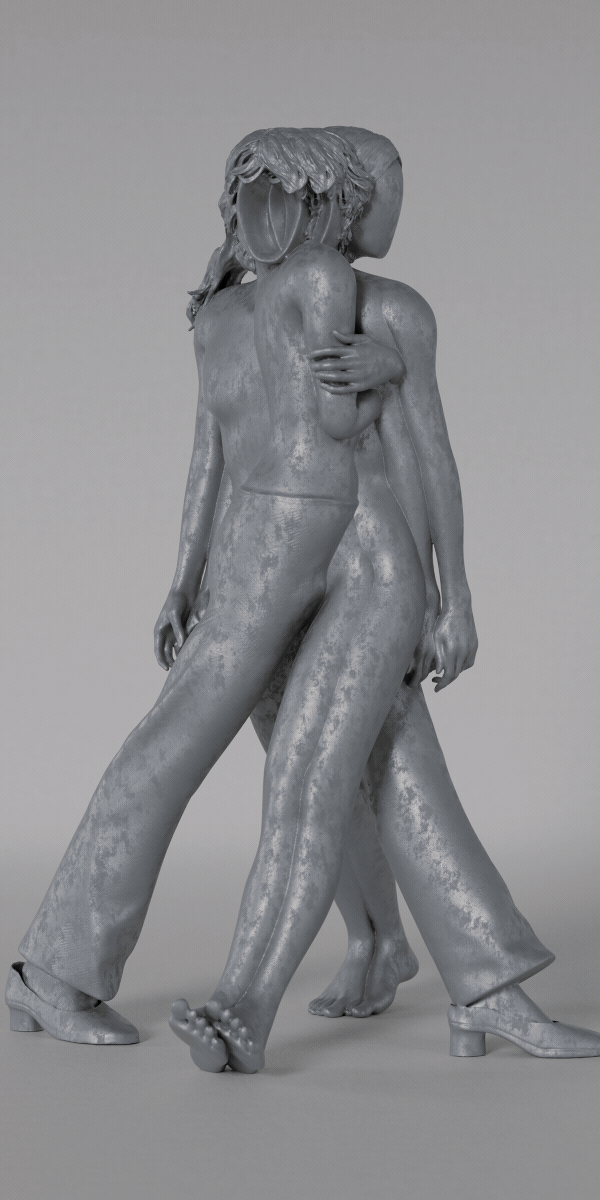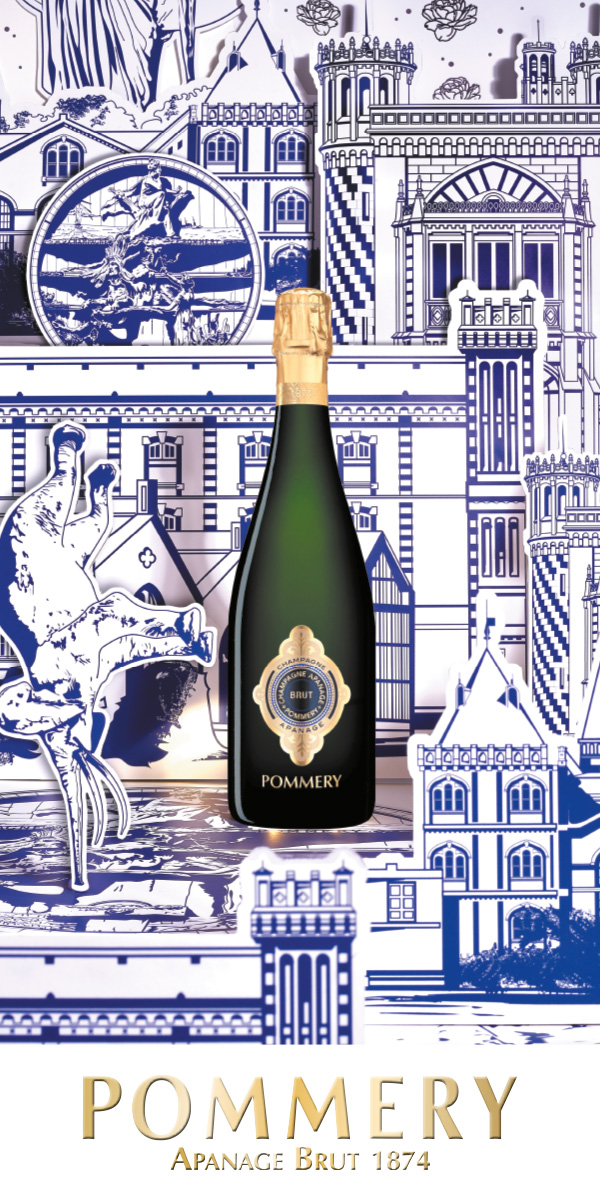Ten Thousand Suns with the Artists: Tony Albert
The 24th Biennale of Sydney, Ten Thousand Suns, closed on Monday 10 June after a three-month run beginning 9 March. VAULT spoke to some of the artists involved with the Biennale’s visionary partner, Fondation Cartier pour l’art contemporain, through their landmark commissioning of 14 First Nations artists from around the world.
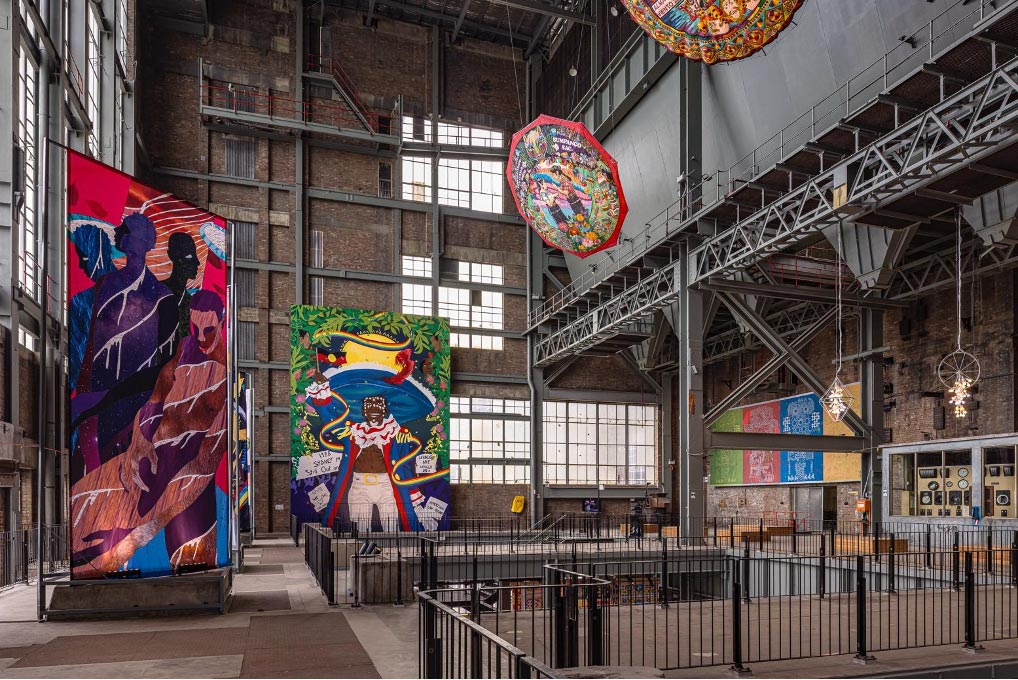
Image credit: Installation view, Ten thousand suns, 24th Biennale of Sydney 2024, White Bay Power Station. Photo: Document Photography.
Grace Sandles:
Can you tell us a little bit about what it's been like working with Foundation Cartier and what that means in the context of something like the Biennale of Sydney?
Tony Albert:
It's been absolutely incredible. It was something that I came on board with some trepidations about. I felt that this experience actually wasn't something for me. The more the discussion evolved, the more I thought I could not only do this but also do it well. But the aftermath is what I'm considering within what I've taken on, and the fact that this is a huge commitment from someone like the Fondation Cartier in really what is the visibility and the opportunity for Indigenous artists to engage on this global platform at a very elite level with a very serious contender in what is the philanthropic enterprise behind the support of contemporary art. What I'd hoped by doing the inaugural fellowship was to embed someone with, I hoped, an understanding of a critical voice, of a bit of notoriety to really push forward an ongoing, successful ongoing partnership and relationship that, if needed, I would be happy to reinsert myself into in the future or to be a phone call away if it's ever needed. However, my philanthropic engagement 20 years in the arts is one of looking at the future of Indigenous and global Indigenous art.
We see Australia as a natural leader in institutional recognition of institutional and policy changes. We stand on the shoulders of incredible people who have fought hard for that to happen. In the aftermath of this partnership, we've had things like Archie Moore at Venice and Kimberly Moulton at the Tate. I think the Fondation Cartier falls into that category of global excellence within Aboriginal art, and that embedding someone within the system of a place like the Biennale of Sydney, I must admit that on top of the 14 incredible global Indigenous artists that I've had the opportunity to engage with, across the board at the Biennale, I've been inserted into many conversations with First Nations and non-Aboriginal people and artists because those conversations are warranted. People are reaching out for what I can offer by being inserted into those spaces. It's a methodology and a different way of thinking. Also, I came on board after many things within this edition had already been instigated. The artists were already selected, and the Fondation Cartier had already selected their artists from that grouping of the initial of Cosmin [Costinaș] and Inti's [Guerrero] curatorial and vision for what the Biennale could be.
In the future, the person who has my role will be much more engaged with the artistic director and be able to present many more opportunities for artist engagements, particularly in a place like Australia, where the artistic director might only go to one or two communities. We're such a vast continent, and access to many art centres is challenging. It restricts the number of art centres, artists, and communities an artistic director can visit. Knowing their vision, we can present a much greater span of artists for them to look at and for them to consider and understand that fit within that curatorium. I think it's a worthwhile partnership. For me, it is a great honour to see where this journey continues to go. Fourteen commissions is vast. Fourteen opportunities for artists is huge. We're always fighting for money and resources, and these big foundations and various philanthropic enterprises are really where we're looking for this support in the present day.
GS:
Absolutely. They have that weight that they can put behind a world-class artist.
TA:
The government can't do that anymore. There are too many other things to deal with. We're really relying on these organisations, and they've stepped up, I think. That offer is just too good not to put our best foot forward and advocate and continue to hopefully go beyond even what their scope is to say, “Well, we've done this now, and we've got in five years' time. Let's stay together! Let's get married!”
GS:
Yeah, where can this go? Can you just briefly describe your role within this partnership? I didn't realise that you came on board after a lot of the selection had been done. What were the things you were responsible for and got to do as part of this partnership? Tell us a little bit about that role that you stepped into.
TA:
I was so grateful that the 14 artists selected were all incredible, and they're people I would have absolutely chosen in their own right, but a conduit between the Biennale of Sydney and the Fondation Cartier and the artists. That spanned from very much what I hate to say is off-the-shelf art, a lot like things that already existed that the curators want. I can communicate with the artist that vision and that dream and why that work was selected through to artists like Nikau Hindin, who tried to engage with the local community. People like Nikau and Mangala Bai were all here for an extended period before the Biennale. I was a point of contact for them and an intermediary between them and the local community. Those indigenous practitioners, cultural leaders, and people who wanted to work through understanding those cultural nuances… I was able to help team them up or give them an invitation to do different things. We could go do the ceremony in the country, which was really important to some of our global brothers and sisters. In Nikau’s case, we could also collect local ochres with consent from the local community so that she could utilise those in her work.
There were a lot of sensitivities that I knew and understood, and I could connect with the correct people in a very short period. Instead of a week's work for someone else, I could do something in a phone call, which is very much embedded in Indigenous philosophy and how we work, knowing and understanding who the correct people are to reach out to in various situations. I think we're all so different globally as indigenous people, but there’s an undercurrent and a thread in our belief systems that connects and unites us. Sometimes, it’s as simple as being in another country and a hotel room for that period, and I think this is a much more global thing about humanity, but it's like, what does it mean to have a home-cooked meal? What does it mean to be surrounded by other Indigenous people, with children, with families, and I guess, experience some of the overlapping, I think, colonial histories that have affected us? It's from something very personal and profound to then something very professional. Some younger artists didn't understand the legal jargon behind many things.
In my experience, I've been involved in Triennales and Biennales and institutions, and I can break those conversations down into much simpler context and understanding. Then, of course, there were language barriers as well. However, the underlying indigeneity and this opportunity to connect meaningfully give a sense of cultural safety and recognition that someone there understands a different perspective. If, at the very least, that is all I did, I would be very happy. But then, of course, there was a lot more involved in it. But yeah, primarily, it's about being the conduit between all those people.
GS:
That's very profound, being the connection, the spokesperson, for this double layer of community. We've got this artistic community that is being brought together by this Biennale, but then there's that double layer of your connection and your personal Indigenous experience. But there are those shared histories, and there are shared experiences that, and ideas of home, that make finding that extra layer of community so important, and that you were the person that was able to do that for them. That's profound. You mentioned this idea of mentorship, and you are a mentor for the NGV’s My Country. So, this is the year people are learning from Tony! Keeping you busy!
In this role, you were able to help us connect to a lot of different artists that we were able to speak to for this partnership that we had with the foundation, which has been excellent. A couple of those artists weren't able to speak to us, but we wanted to talk a bit about their work, so we were hoping that you could be that representative and talk about them.
I wanted to start with Doreen Chapman's beautiful work. Can you tell us a little bit about it? Why ATMs, and why has each exhibition space opened with these pieces?
TA:
Sure. Well, Doreen Chapman is from the Pilbara and is one of our beloved artists. As a nonverbal artist, of course, communication can be very, very difficult. Still, she could travel with her family, and it was beautiful to meet them and get to know Doreen, who had the most fantastic time in Sydney. What I love about this project is that these were all in place before I came on board. Still, it does represent an understanding of cultural nuances and the importance of how we interact and show and give visibility to Indigenous artists. I applaud Cosmin and Inti for that. However, Doreen was the only artist represented across every platform and exhibition partner of the Biennale. When you look at the ideas of the different partners, such as the Art Gallery of New South Wales, the MCA, Chau Chak Wing, and White Bay, It stands to reason within protocols and acknowledgement that there would be an indigenous greeting or offering at the start of every show. They've cleverly done that with an artist like Doreen. I love that they've done it not through an artwork that is iconically representative of who we are – it's not a big dot painting or a painting of country. They've challenged the viewers with Doreen's work of the ATMs. What I love and is very new to me is that money story. It is something that is personal. It's not discussed; no one shares their pay checks with anyone else. I'm talking about this in the broadest terms. Our own money and what we do with it is a personal thing for everyone. For Doreen, I think to explore this issue with those cultural nuances attached, with the idea of what it means for a family to receive royalties from places like mining, what it means for Aboriginal people for that distribution and that way in which we think of, know, and understand what is ours and how it belongs to a vast or a more extensive community of people, what those cultural responsibilities are, there becomes this fascinating story behind this simple machine which gives out money. That offers a fascinating insight into many complex questions in an interesting… It's slightly dark humour, in a way, to be doing this. They're stunning paintings.
She's an incredible master painter in the way she utilises the brush and her techniques wonderfully. I think it's met a lot of goals in what the artistic directors are trying to achieve, so this presence of Aboriginal welcoming and visibility, but also switching up and changing that dialogue to a very political story, a story that is not known or spoken about but unwraps a lot of conversation behind some of the more sinister elements of culture. I'm saying this very sensitively because I'm very aware that Doreen and her team are very cautious about how it was spoken about. In many ways, as people, we don't want to bite the hands that feed us. We're very well aware of these royalties and money story that's happening at the detriment of our own story places and sacred sites. It's a painful discussion as well, but it's one that is very important. To me, that's what Doreen represents within this. It's far more complex and exciting than many viewers will know and understand.
GS:
It also connects a bit to this idea of patronage, that a lot of art wouldn't get the visibility without this significant investment. I also wanted to ask you a bit about another one of the artists with a language barrier, Freddy Mamani, whose work I love. I'm going to Bolivia in a couple of months and hoping to see one of the chalets. I got to say hello to him because he had his translator there on the media day. Can you tell us a little bit about his fantastic neo-Andean work?
TA:
It's precisely that. We very rarely see Indigenous iconography embedded into our local environment here in Australia and almost definitely overseas. It created a new vocabulary in how he melds those two things. But it is in line with, again, the Indigenous methodology behind everything we do and the spaces we're in, which have particular modes and ways of thinking. I feel, as an Aboriginal person from Australia, that these translations are very different. When Indigenous philosophy is embedded within architecture in Australia, it takes on unique cultural nuances where certain people might be unable to see each other or talk or interact because of these layers of engagement within specific communities. That's a very broad stretch to something that Freddie's doing. But what I love about inserting those ideas is just how transformative it is as an Indigenous person to engage with spaces and places that make visible who you are and what you represent. That's what Freddie's works do in such a spectacular, colourful, playful way.
When you see a house or a building on a street that looks like that, it's transformational to thoughts and feelings about what and how things can look. It makes you question everything else in a way. It's like, why do we have these hideous buildings around when there's so much life and energy attached to culture, connected to what those symbols, what those colours, mean, and how they can inform the local community? He’s always sat very much outside an exciting mix of architecture, art, and design. He's also an artist with an ongoing relationship with the Fondation Cartier. One of, if not the only, artist already in their collection and someone they were very well aware of. Again, the opportunity this fellowship offered was one where the relationship with the foundation was already so close. The language barrier only mattered a little because they could take on many of the conversations I had with other artists.
GS:
I love his works. They're such a joyous celebration of culture. They put joy, love, and all of those pure good things at the forefront. You look at them, and they make you happy.
TA:
They're just fantastic.
GS:
That's amazing. Thank you so much. White Bay Power Station reopened basically for the Biennale. It was a more significant thing set in motion outside of the Biennale, but this was a substantial catalyst for finishing it on time. It's just an incredible space. Alison and I went yesterday, and I'd seen it before, but she hadn't. She was saying, “This building is amazing!” Can you tell us a bit about what it means to have that new space and what it means to have the work in this very industrial, iconic landmark in Sydney?
TA:
For someone who lived in Sydney for a decade, I accept I'm not a Sydney local by any means, but whenever anyone, particularly in the creative industry, drove over Anzac Bridge, it's like, “What is that building? Why is it just sitting there?” It's the ultimate dream space for any artist to work with, actually, through the process of my involvement at White Bay. I've heard of videographers and films being shot there and utilisation of the space as it was, which I was fascinated with. But it opens up yet another incredible venue for storytelling in a space. You could probably walk through that space wholly empty and void of art and be completely enthralled by the sheer volume and all the buttons, bits, and pieces. It has a life of its own. But also, we know and understand the history of that site. What does a power station mean? The extraction that comes from that is the taking of the Earth. Those artists whose work is intrinsic to the space and place become very much embedded when they explore those thematics and those ideas.
The history behind that place plays a vital role in contemporary thinking and brings up a lot of ideas attached to colonialism and capitalism, and all these exciting ideas are embedded within that forum. I can't offer any insight into what's happening with that space from here on in, but you can only hope that it continues to be this engagement for culture and art and storytelling and for sharing now that it has done what it has. But when I look globally at the existing Biennales and Triennales, it is about transforming space. You want to go into a known space like an institution, Artspace, New South Wales, or the MCA, and not feel you're in those spaces but feel you're in the Biennale. Those spectacle spaces offer something in that bigger scale of art shows. That is absolutely what White Bay does. It does it successfully. It's great that artists can push boundaries, make monumental work, and still be housed under a roof for visitors to see. Seeing it before and after and the tremendous amount of work done in such a short period to make it safe and secure as a venue, I was impressed.
But I'm very excited about that. I think that there is a lot of opportunity within urban spaces, and it should be encouraged to use these spaces to bring communities together.
GS:
Absolutely. Its sheer size allows paintings like Dylan Mooney's colossal canvas, which is just phenomenal and so impactful because of its size.
TA:
Yeah, those long views. But then there are smaller moments where, and I think, some criticism is that works can get lost, you get to uncover and find treasures in the space. There's something extraordinary about that, too. Not everything has to be monumental in scale, but you can come across something or stumble across something. That's the joy of you getting lost in these spaces that we're so unfamiliar with. It offers a platform for very different scales as well.
GS:
Absolutely. Wow, that's just fantastic. Thank you for joining us and for sharing these insights into the behind-the-scenes, but also what people do get to see when they come. They get to see these commissions by these 14 incredible Indigenous artists from all around the world who were brought together under this visionary partnership.
TA:
It's a pleasure. Thanks, Grace.





